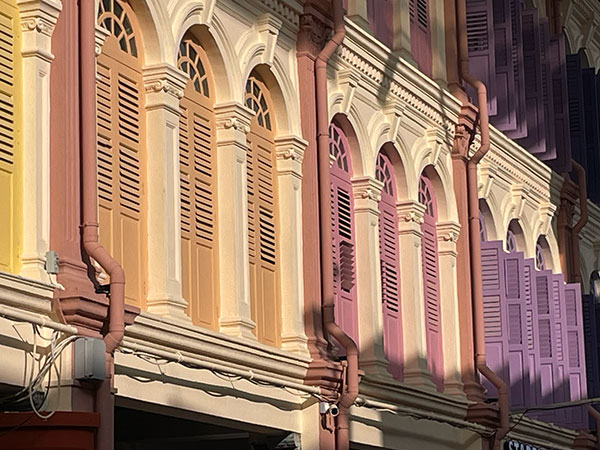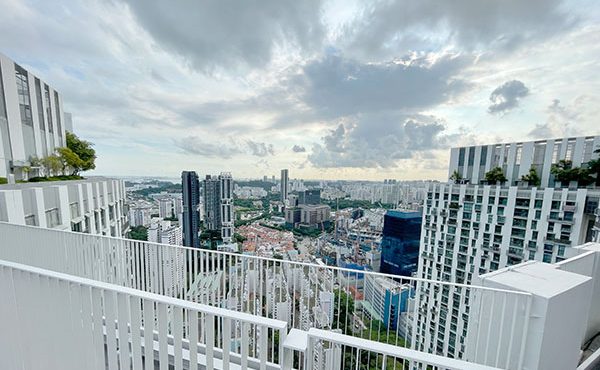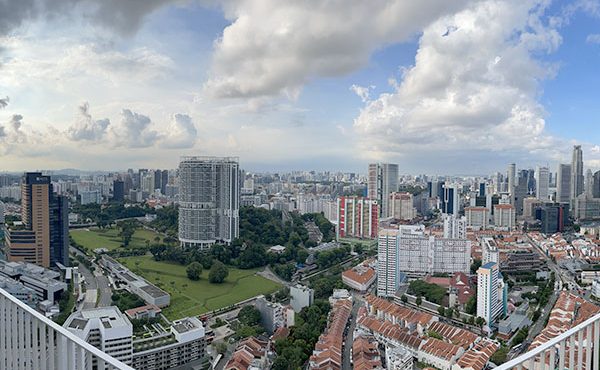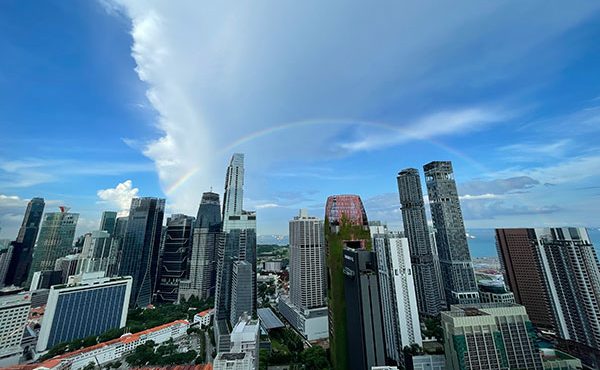
Singapore’s skyline is constantly in motion. Construction cranes and hoardings are as much part of the visual identity of the city as its heritage shophouses and conserved districts. In a place where land is scarce and redevelopment is a national imperative, conservation seems, at first glance, an unlikely companion. Yet heritage in Singapore is not only preserved—it is planned, curated, and deployed in service of nation-building.
This article explores the logic, practice, and tensions of conservation in Singapore. It begins with the institutionalization of heritage planning through the Urban Redevelopment Authority (URA), the central agency responsible for land use planning and urban design in Singapore.
The URA not only oversees the Master Plan and Concept Plan but also manages the delicate task of balancing conservation with redevelopment. It designates conservation areas, sets restoration guidelines, and evaluates the heritage significance of buildings.
The agency works closely with private owners and developers to integrate heritage objectives into broader urban goals, ensuring that conserved spaces contribute to both cultural identity and economic vitality. The URA, which launched its formal conservation programme in 1989, has over 7,000 buildings granted conservation status—ranging from entire districts like Chinatown and Kampong Gelam, to individual structures like the former Tanjong Pagar Railway Station.
But conservation in Singapore is not a straightforward act of restoration. Like elsewhere, it involves a form of selective memory-making, tightly controlled by state agencies and shaped by developmental pragmatism. Decisions on what to preserve and how are bound up with broader narratives of multicultural harmony, economic value, and global city branding.
Some districts, like Chinatown, are carefully preserved as cultural showcases—sites where history is not just remembered, but packaged for tourism and national identity. Others, like Dakota Crescent, have seen heritage elements retained selectively, while the broader area undergoes redevelopment. In these cases, conservation becomes less about halting change and more about managing it in visually and politically palatable ways.
This raises key questions: Whose heritage is being preserved? What forms of memory are lost in the process? And how do conservation policies reflect, and reinforce, particular visions of the nation?
The remainder of the chapter will examine these questions through selected case studies and reflect on the delicate balance Singapore strikes between remembering its past and remaking its future.
Early awareness of heritage loss during the 1970s, as rapid development erased much of the built past, prompted the government to begin documenting historic buildings and neighbourhoods. This groundwork laid the path for the URA’s formal Conservation Programme, launched in 1989 under increasing public pressure and international scrutiny.
To enable this shift, the URA introduced technical and policy innovations that framed conservation as compatible with economic renewal. Flexible guidelines allowed conserved buildings to adapt to modern needs—such as being converted into boutique hotels or restaurants—while preserving their historic façades and proportions.
Key to this approach were partnerships with building owners, developers, architects, and local communities, fostering a collective negotiation on how heritage could evolve alongside growth.
These efforts were complemented by a growing recognition of the role individuals and communities play in shaping identity through heritage. As the conservation movement matured, URA and allied bodies increasingly supported local initiatives, from small business owners adapting heritage buildings for modern use, to community groups organizing heritage trails and educational events.
This bottom-up engagement helped ensure that conservation was not solely state-driven, but also responsive to evolving cultural narratives.
Crucially, these collaborations enabled a more nuanced balancing of the old and the new—where preserved spaces could be both historic and vibrant, reflective and adaptive. Central to this philosophy was the belief that conservation would only be meaningful if Singaporeans themselves were involved in the process.
Planners emphasized not just physical restoration, but the education and participation of local communities. Traditional building techniques were shared with residents and craftspeople, instilling a sense of stewardship and pride. As one URA contributor put it, people ‘have to do it… it is their heritage’—a recognition that long-term conservation depends on the buy-in and care of those who live within these environments.
Over time, conservation evolved from protecting individual monuments to preserving entire urban environments. In districts like Chinatown, Kampong Gelam, and Little India, efforts focused on retaining the street grids, architectural types, and building scales that gave these places their identity, not just their landmark buildings.
In Chinatown, conserved shophouses feature restored timber windows, decorative plasterwork, and internal courtyards. Kampong Gelam retained its religious and Malay-Muslim heritage, with the Sultan Mosque and Malay Heritage Centre as anchors.
Little India showcases a blend of South Indian and colonial architectural styles, maintained through ornate façades and vibrant public life. Being furthest from the central business district, Little India also experiences comparatively less redevelopment pressure. As a result, it functions more closely to its historical form than districts like Chinatown or Kampong Gelam. Some residents still live in the conserved shophouses, and the neighborhood maintains a stronger continuity of cultural practices and everyday life.
These districts are not just frozen in time; they are animated by active uses and social rituals. Within URA’s urban design strategy, low-rise conservation areas are intentionally maintained as experiential ‘moments’ in the high-rise cityscape. These spaces offer a contrast in scale, ambiance, and materiality—elements deemed essential for healthy urban environments. Their distinct character provides sensory relief and historical continuity amidst the verticality of modern Singapore.
Beneath the surface, however, questions linger: What is being preserved? Who decides? And what is lost in the process?
In many cases, conservation seems to prioritize the aesthetic surface of heritage over its lived reality. Shophouses are saved, but their former uses—as homes, community centres, places of informal commerce—are not. What remains is something cleaner, quieter, and more legible to the visitor’s eye.
Take Chinatown, for example. The district, once home to generations of working-class Chinese residents, has become a heritage attraction complete with interpretive panels and regulated signage. But the daily life of Chinatown—the informal economy, the dialects, the smells of communal kitchens—is no longer part of the experience. What remains is a curated version of itself.
Kampong Gelam tells a similar story. Once the seat of Malay royalty and a hub of Muslim culture, it has been transformed into a conservation showcase lined with artisanal shops and curated eateries. The historic Sultan Mosque still commands respect, but the cultural ecosystem around it has been reshaped to serve contemporary consumption. Here, heritage is preserved not necessarily as continuity, but as theme.
This is not to say the conservation effort is without merit. Singapore has arguably done more to preserve its architectural heritage than many other rapidly modernizing cities. It has found ways to integrate heritage into the economic life of the city. But the approach reveals a deeper tension: conservation as simulation, where historical environments are staged for consumption rather than sustained as living places.
One example of this complex negotiation is CHIJMES, the former Convent of the Holy Infant Jesus, which was transformed into a mixed-use complex. Its conservation integrated key architectural features—such as the Gothic-style chapel and cloistered walkways—while adapting the site for contemporary leisure uses, including dining, retail, and events.
This project exemplifies how heritage can be preserved not as a static relic, but as an active urban space.
CHIJMES reflects both the potential and the contradictions of adaptive reuse: it is a space where historical ambiance supports modern commerce, blurring the lines between reverence and repurposing. At the heart of Singapore’s approach to conservation is a carefully negotiated balance between economic function and cultural identity.
Tourism, while not the primary intent, has become a powerful justification for heritage efforts, offering a means to secure political support and public investment. These heritage districts are designed to be visually coherent and easily navigable—strategically restored for broad appeal, both to locals and international visitors.
This approach enables heritage to serve a double purpose: it reinforces a shared national story while offering engaging, photogenic spaces that contribute to Singapore’s status as a global destination. Yet this alignment also raises tensions. As conservation sites become tailored to visitor expectations—with curated signboards, tidy façades, and thematic consistency—they risk displacing the everyday uses and lived histories that once defined them.
Singapore’s planning bodies acknowledge this tension, affirming that heritage is ultimately for Singaporeans, not just for tourism. However, the city’s broader tourism strategies, such as those outlined in the Tourism Masterplan, ensure that conserved districts also function as economic infrastructure—tools for place branding, identity formation, and global positioning.
This duality prompts critical questions: when heritage is curated for visibility, what becomes invisible? And can places preserved for economic gain also remain spaces of genuine cultural continuity?
One revealing episode in URA’s conservation journey came when it experimented with a more laissez-faire approach—allowing market forces greater influence over development within heritage zones. Officials later reflected that this led to runaway land values, pricing out smaller tenants and undermining the social vibrancy these areas were meant to protect. This experience reinforced the necessity of strong planning controls and community-oriented frameworks to safeguard the long-term integrity of conserved environments.
Ultimately, URA’s conservation work reflects the broader ethos of Singapore’s planning: deliberate, data-driven, and centrally coordinated. Heritage is protected—but also instrumentalized. It becomes another layer in the city’s choreography, choreographed for visibility, marketability, and national narrative.
Conservation in Singapore is thus a constant negotiation—between memory and market, continuity and consumption. In a hyper-urbanized landscape, the desire to preserve built heritage collides with capitalist pressures to redevelop and tourism’s impulse to commodify. The result is a uniquely Singaporean paradox: heritage environments that are both protected and transformed, authentic and curated.
These sites anchor identity for future generations, yet must also perform within the logics of urban growth and global visibility. As Singapore moves forward, the challenge will be to ensure that preservation remains more than surface-deep—that it continues to serve as a living memory, not just a marketable aesthetic.
To achieve this, planners and communities alike must continue exploring models of conservation that embrace both physical authenticity and cultural vitality—where memory is not only preserved in bricks and mortar, but lived and renewed through everyday use, storytelling, and civic participation.
***
All pieces in The Singapore Chronicles:
- Part 1 – Introduction: The Paradoxical City
- Part 2 – Singapore’s Urban History in Four Acts
- Part 3 – The Politics of Preservation
- Part 4 – Housing the Nation
- Part 5 – Memory in the Margins
- Part 6 – Designing for Urban Health
- Part 7 – Conclusion
- Part 8 – Divergent Models: Singapore, Barcelona, Vancouver
***
Erick Villagomez is the Editor-in-Chief at Spacing Vancouver and teaches at UBC’s School of Community and Regional Planning. He is also the author of The Laws of Settlements: 54 Laws Underlying Settlements Across Scale and Culture.




